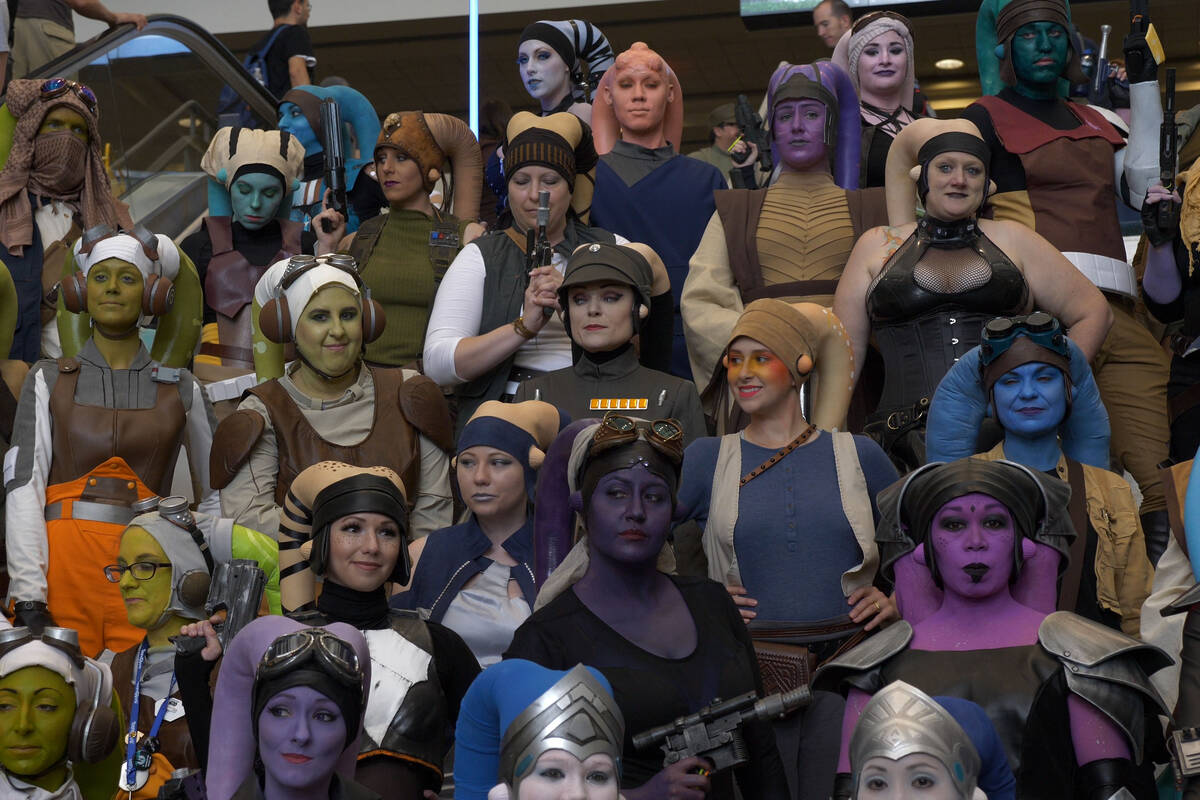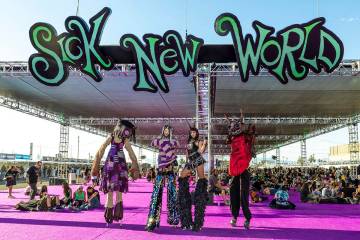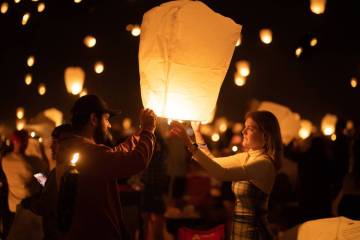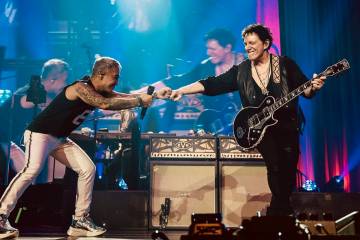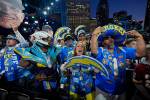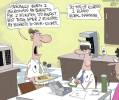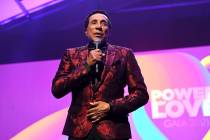Marvel, ‘Star Wars’ projects highlight Vegas Valley Comic Book Festival
Douglas Wolk has done something that, depending upon how you feel about comic books, was either cool and wonderful or a reason to call the authorities: He read every superhero comic published by Marvel Comics from 1961 (“Fantastic Four” No. 1) to 2017 (“Marvel Legacy” No. 1).
Wolk’s deep dive into Marvel-dom left him intimately familiar with the Avengers and the Incredible Hulk and other Marvel stars, as well as the company’s also-rans, B-listers and failures. It also gave him a unique vantage point from which to see how Marvel faced, or didn’t, civil rights, the Vietnam war and other social and political currents of the past half-century.
He covers it all in his new book, “All of the Marvels: A Journey to the Ends of the Biggest Story Ever Told” (Penguin, $23.49). On Saturday, he’ll present “A History of the Marvel Universe in Five Objects,” a talk based on his book, at the 13th Vegas Valley Comic Book Festival.
Also appearing virtually at the festival will be Annalise Ophelian, whose documentary series “Looking for Leia” examines the nature of fandom, particularly among women and nonbinary fans of the “Star Wars” universe. The docuseries includes interviews with fans who’ve found meaning and connection in the more than 40-year-old sci-fi saga.
The festival will run from 9:30 a.m. to 4:30 p.m. Saturday at the Clark County Library, 1401 E. Flamingo Road. The free event will include panel discussions, cosplayers, meet-and-greets with artists, writers and publishers, a vendor area, crafts, kids’ activities and entertainment. For more information, visit vegasvalleycomicbookfestival.org.
The event marks the Vegas Valley Comic Book Festival’s return after last year’s COVID-prompted cancellation. Chair Suzanne Scott said guests will be required to wear face masks and seating will be arranged for social distancing. (The first 600 guests will receive a commemorative cloth face mask.)
While the guest list is a bit abbreviated compared with pre-pandemic times, Scott says the festival still aims to satisfy fans’ interest in comic books and offer newcomers an easy way to explore what the medium is about.
A Marvelous undertaking
So what do other fans think about Wolk doing something most of them can only dream of? “Mostly the reaction I get is, ‘Are you OK? Did your mind survive?’ ” he jokes.
Wolk figures he read about 27,000 superhero comics published by Marvel. In the introduction to his book, he calls that collection of comics “the longest continuous, self-contained work of fiction ever created.”
Surprisingly, although those more than a half-million pages of comics were created by thousands of artists and writers over a span of decades, Wolk says they are, “more or less, consistent with one another.”
He read the books in no particular order and made notes when something struck him. “Themes and ideas and motifs gradually emerged,” Wolk says, encompassing topics ranging from nuclear war to racism and civil rights.
“The first decade is very much concerned with the Cold War and the idea of what is ‘alien’ and what is ‘monstrous.’ Monsters were a big thing. Marvel was publishing monster comics before superheroes.”
As the ’60s rolled on, “you see an attitude change toward the war in Vietnam,” as seen in a character in Spider-Man comics who returns from Vietnam and “something terrible happened to him. A few years later, you’ve got college students picketing (Iron-Man/Tony Stark’s) Stark Industries, which is an arms manufacturing plant.”
The book’s appendix consists of “me trying to come up with a plot summarization of 60 years of Marvel,” Wolk says. “But, very broadly, there is the theme of science as a great driving force of the world. All the best heroes and best villains have Ph.D.s, and science created a world that is transformed by wonders and horrors.”
And there are “questions about family, about what family means, and what monsters are,” Wolk says.
He finished impressed with what he read, although it’s not all good. “There’s some bad stuff in there,” he adds. “I read every issue of ‘NFL SuperPro’ ” — about a former football player superhero who wears a super football uniform; it ran for just 12 issues — “and it is what it sounds like.
“But the good stuff is good. It’s so good. Some of it is wonderful and some of it is enduringly wonderful.”
Finding Leia
The festival will offer a screening of “Looking for Leia,” Ophelian’s seven-episode short-form documentary series that looks at fandom in general, and “Star Wars” fandom in particular, through the lens of women and nonbinary fans.
They’ve always been there, from the first film’s premiere in 1977, she notes, but the lens through which most observers were looking at sci-fi was “not reflective of the tremendous diversity of what fans are really doing.”
The culture of sci-fi and fantasy fandom tends to be thought of as homogeneous and “very narrow,” focusing only on the most visible, mostly male, slice of fandom, Ophelian says.
In addition to distorting the reality of fandom, “it also, I think, gives a distorted view of the reasons (why) people engage in fandom to begin with,” says Ophelian, whose goal was to “examine what happens when someone loves a thing and wants it to be a part of their daily lives.”
Ophelian — who will participate virtually in a discussion of her film — interviewed women and nonbinary fans who found resonance, identity and inspiration in the “Star Wars” saga.
“The truth is, we’ve always been there, and all forms of fandom are valid,” says Ophelian, who has seen changes during her own pursuit of fandom. She recalls attending events during the ’90s and being “adrift in a sea of fanboys. You had to assert yourself.”
Now, she has been surprised at the number of women she sees, “then I was surprised why that was surprising.”
Contact John Przybys at jprzybys@reviewjournal.com. Follow @JJPrzybys on Twitter.
Preview
Vegas Valley Comic Book Festival
9:30 a.m. to 4:30 p.m. Saturday, Nov. 6
Clark County Library, 1401 E. Flamingo Road
Free (vegasvalleycomicbookfestival.org)



